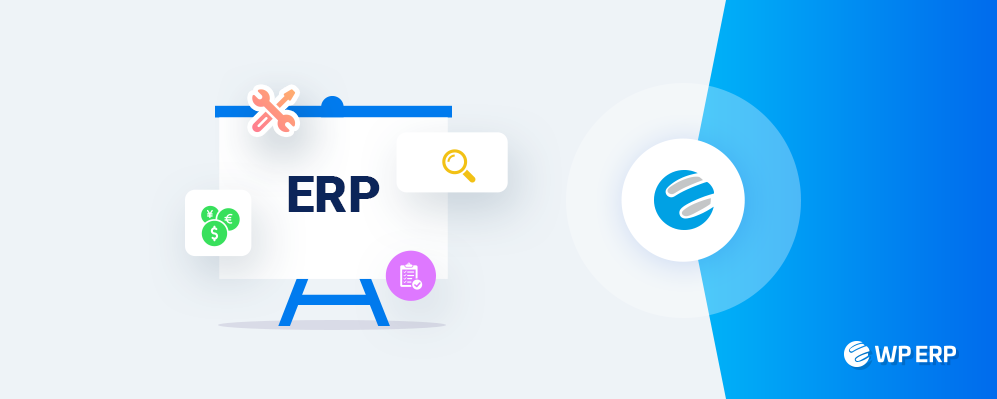As a small business owner, you need to constantly observe the competitive landscape of your business so as to stay ahead of the curve. Rationally, if you feel that your business is scaling up with time and see that the current ERP system can’t keep up with the pace of your business needs then it’s time to think about something different.
For this purpose, the thing that tops everything is nothing but the proper understanding of your business needs whenever you are going to choose an ERP solution or want to replace the existing one with a newer one. Today, in this article, we will walk you through the five steps to get to a better ERP system implementation process for your small business. Now, let’s begin:
Step 1: Determining your business requirements

Every business organization consists of different branches like human resource management, customer resource management, supply chain management, the accounting department and so on. Now, figuring out which part of these are most important to manage can thrust you forward to choose the ERP tool that you are looking for. You can ask yourself:
- Did you ever get the sinking feeling that your customer is about to churn just because you lost the information and so you are struggling to provide with proper care?
- Do you need to do a lot of paperwork to manage everything?
- Is your existing ERP tool not enough to play the role of an accountant and produce automatic yet correct reports?
- Do you find it hard to monitor attendance, payroll, employee leave management and other kinds of stuff related to HRM?
If the answer to the aforementioned questions is ‘yes‘ then it’s time to replace your legacy system with a better one.
Step 2: Finding out the limitations of your current ERP system
Next, comes another important part and that is nothing but finding out the limitations of your current ERP system. For your convenience, here is a list of bullet points that might help you identify the areas that your ERP is liming your business’ growth:
- Are the implementation and maintenance cost very high?
- Is the ERP that you are using hardly adapts to the hardware (like biometric devices, POS machines etc.)?
- Are you spending a lot to train up all employees of your organization so that the tool is used efficiently?
- Does your current legacy system not integrate with other applications needed to automate your business?
All you have to do is find out the answers to these questions. Again if the answer is ‘yes‘ move on to the next step.
Step 3: Discovering the features of a modernistic and advanced ERP tool

Despite the fact that there is no “one size fits all” solution, modern ERP tools can be extended with add-ons to catch up with your growing needs over time. This also leads you to customize the solution on demand. Plus, the custom access to the admin panel based on various user roles will also be useful enough to secure the data of your system. Here are some of the benefits a modern ERP tool can offer:
- Saves your time and effort with the automated accounting and financial features. You don’t need to enter the data separately in every step of the accounting, HRM, and CRM process.
- Helps you deliver better customer service by storing customer data in accordance with different life stages, sending e-mails or messages, scheduling meetings with them and many more.
- gets integrated very easily with any other software via APIs.
- Streamlines project management needs with a built-in project management tool.
- Improves inventory management.
- Makes better decisions through financial reports or statements.
- Helps you to establish a virtual office and collaborate with each other.
- Supports new locations and currencies and even translations that allow you to enter into new markets along with new employees speaking different languages.
- Standardizes a single ERP solution and help simplify your IT environment.
Step 4: Crafting your own neatly blueprinted scheme

When you want to implement a newer system in your business enterprise, you have to consider certain things:
- Listing out functions
Even though you are planning to replace your current legacy system with a newer one, make a list of the functions that your current ERP tool already has. After that, prepare a wish list of the features that you are looking for from a new state-of-the-art ERP tool. While preparing the latter list go back to step 3 to cross check if something is missing from the list.
- Budgeting
After you have made your wish list, now is the time to set a budget for the solution that you want to buy. In this regard, you should be starting with the supporting and maintenance cost and be careful of any hidden charges along the way.
- Find help from technology experts
Never keep doubts in your mind when finalizing your decision to choose a new solution. If you are in doubt whether the new system caters to your unique organizational needs, then you can find an ERP expert who can address the issues.
Step 5: Choosing a proper ERP system implementation partner
Last but not least, the journey of your business automation can be really enjoying if you can choose the right solution and technology partners. Some of the questions you can ask yourself to find an appropriate partner is:
- Have they implemented their software before to any other business enterprise like yours?
- Are they like to provide you with customer support before, during, and after implementation?
- Are their technical expertise and product knowledge good enough to help you?
- Are their product’s reviews positive?
These are some of the questionnaires which can be used as the basic criteria to choose the right technology partner and implement ERP system for your small business so as not to lament for later on.
Wrapping-up
If you follow these steps there’s no reason that you won’t be able to choose an ERP solution that best fits your business enterprise or replaces the current legacy system. The last thing that you can not take out of the equation is that your employee’s voice and requirements. That’s because they will be directly affected by the tool and so you have to listen to them too.
However, these are not the hard and fast rules to choose a new solution and replace your old legacy system with the newer one. If you have a different approach you are always welcome to share that in the comment section below.





Nicely explain ERP System implemenattion Al Suzaud Dowla. Business processes are getting complicated day-by-day, so it is very important to use ERP software by small and medium enterprises to stay in the competition.
Nice article, this has little benefit to TRULY small businesses.